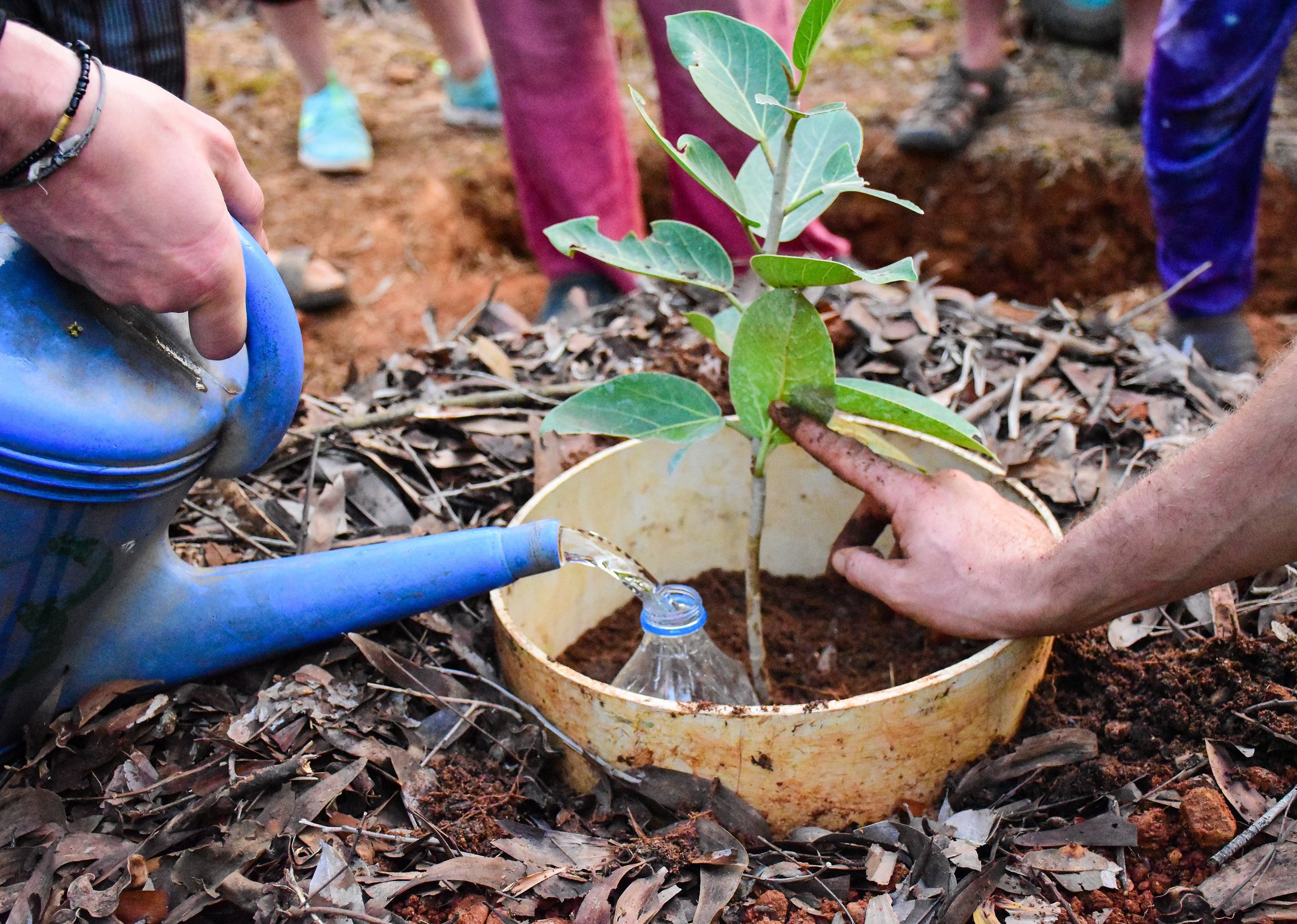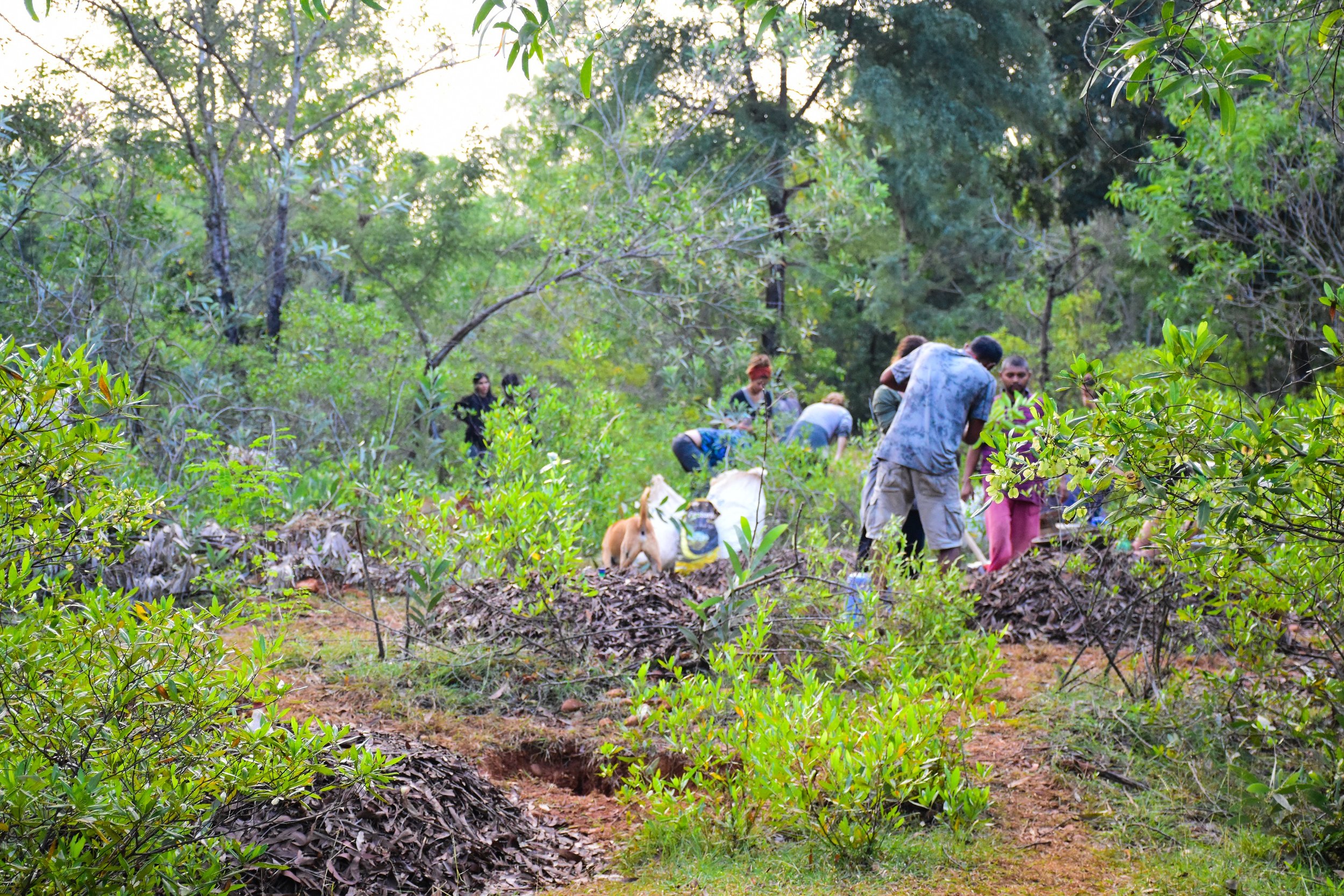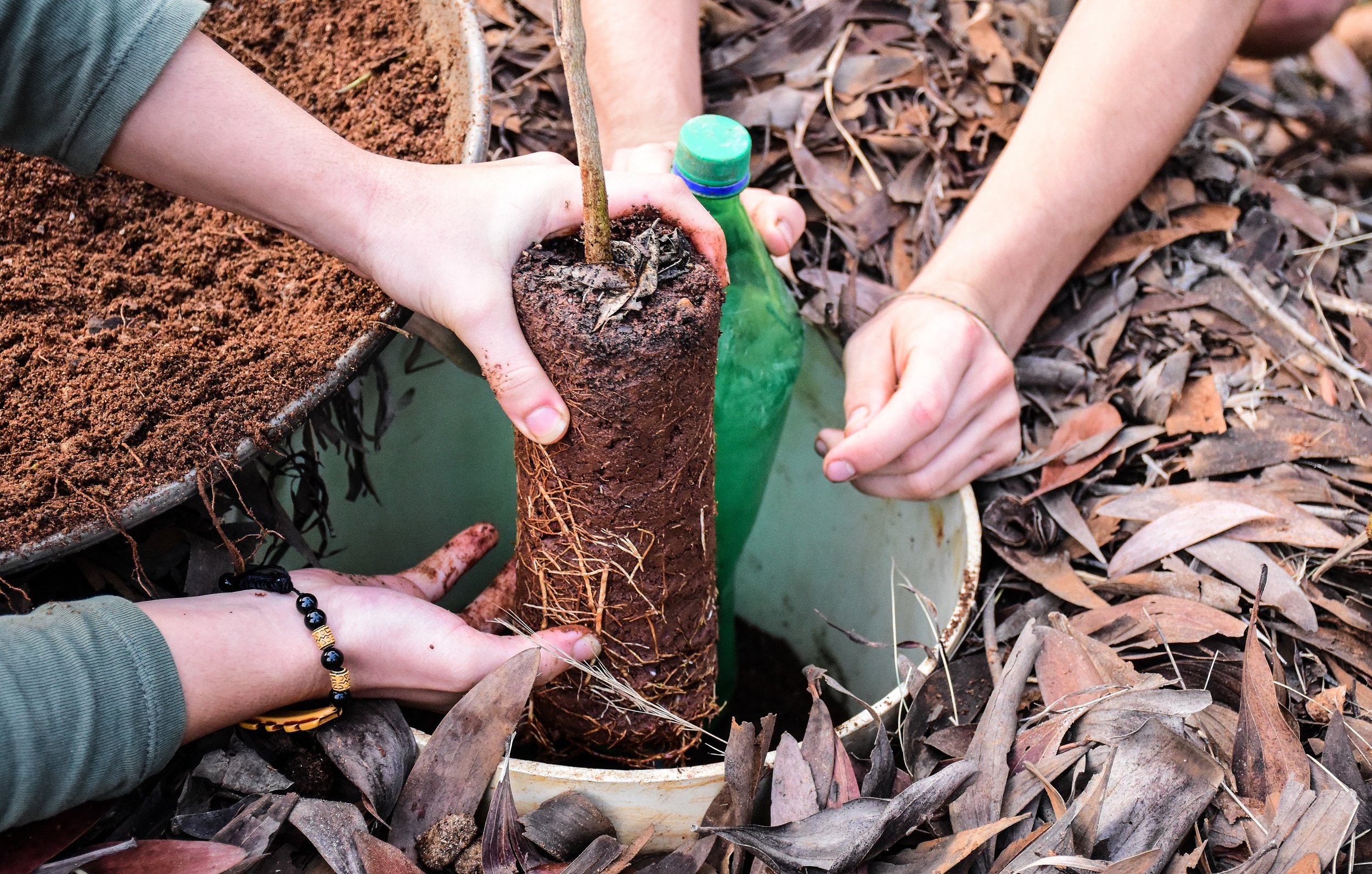After spending a few months traveling and volunteering near the Himalayas in India, I wanted to escape the chilling December winds and move down south with one clear goal in mind – to plant trees. Then, a unique reforestation project in an experimental South Indian township of Auroville presented itself.
In the past, all of Auroville area and coastal South East India was covered by mighty, biologically rich and rare forest ecosystem where elephants and tigers roamed around freely. The ancient, indigenous Tropical Dry Evergreen Forest (TDEF) is comprised of hundreds of species of trees, shrubs, lianas, epiphytes, herbs, tubers and myriad of animals. About 600 herbaceous plants of TDEF were recorded for special significance in medicinal, cultural and religious uses. Sadly, the complex and diverse ecosystem of TDEF was relentlessly deforested during colonial period to build cities, make furniture, export timber, and graze livestock. Only 0.01% of TDEF exists today.
An ecosystem, decimated to barren red-earthed desert, left first Aurovillian settlers in dismay; with no trees there was no shade to hide into, no water and soil to hold in place during torrential monsoon rains. A large-scale reforestation in and around Auroville area began in the 1970s with the help of grants. Seeds were collected from surviving TDEF sacred groves around temples and first tree nurseries were established. Reforestation in the desert meant more than just digging, planting, and watering. Bunds, swales and ponds were built to capture and prevent washing away of tons of red-colored rainwater with topsoil into The Bay of Bengal. As a result of successful soil and water conservation, a million ornamental, timber, fruit, fodder, and nut trees were planted. Trees survived and grew, seeds dispersed naturally, and new microclimates formed. Aurovillian wasteland transformed back into a green living landscape supporting animals, plants and people. And with this success story begins another one…
In the dusk of the forest, cool, humid air invited me in, as I first walked onto the grounds of Sadhana Forest, offering reprieve from nearby hot, unshaded and congested Pondicherry. The trees, the chirping of the birds and then the solar panels, the kitchen, the huts with hammocks, guitars and volunteers. Part of Auroville, Sadhana Forest is a volunteer-based organization and community whose goal is to reforest and provide food security in degraded arid lands. A young Israeli family settled here in 2003 with an aim to plant TEDF trees on 70 acres on severely eroded land. I was amazed to learn that 15 years ago, the piece of land that is almost completely covered by TDEF, used to be a scarred, gullied desert with a few patches of surviving trees – a living memory of once abundant TDEF.
Brightly lit sunrise welcomed a new day at Sadhana Forest. Our team of volunteers went out deep into the forest to collect leaf litter and humus rich topsoil for newly planted saplings. People come here to volunteer and visit for all sorts of reasons: to learn about sustainable living, to see ecological restoration in action, to escape offices and engage in manual labor or to reconnect with nature. The strength and success of the organization lies in thousands of volunteers that come here from over 50 counties of the world. Upon arriving here, one learns that Sadhana Forest is much more than a reforestation project. It’s a people’s sustainable community project. Volunteers young and old share their living space, cooking, eating, and working together. One learns what’s it like to sleep in huts built from natural materials, live off the grid on solar energy, contribute to zero waste and domestic water conservation practices, use dry composting toilets, and prepare locally sourced unprocessed vegan meals. It’s not a secret that animal agriculture is the leading cause of deforestation. And so, in its pledge to bring back and protect remaining forests, Sadhana Forest was also established as a vegan community.
To date, Sadhana Forest provided environmental and community conscious learning experience to over 6,000 volunteers, replanted 70% of Auroville land with 28,000 TDEF trees, and contributed to successful water conservation in and around Auroville area. Recontouring the land to increase runoff absorbency during precipitation events led to a 6-meter increase of underground water table level, greatly benefiting surrounding communities that rely on water for farming, drinking and other household purposes. Sadhana Forest has also expanded to other countries. In Haiti, 80,000 trees were planted. In Kenya, Sadhana Forest started a project to directly benefit dietary needs of communities; Samburu people plant and protect small food forests around their houses.
Its aspiration to revive deforested landscapes, practice effective low-cost planting techniques, and in doing so directly engage with local communities has been proven to be a huge success. Sadhana Forest plants trees not for profit but for the benefit of ecosystems and all future generations to come.May there be more Sadhana Forests to grow trees and people.
By Tatiana Bogdanova





